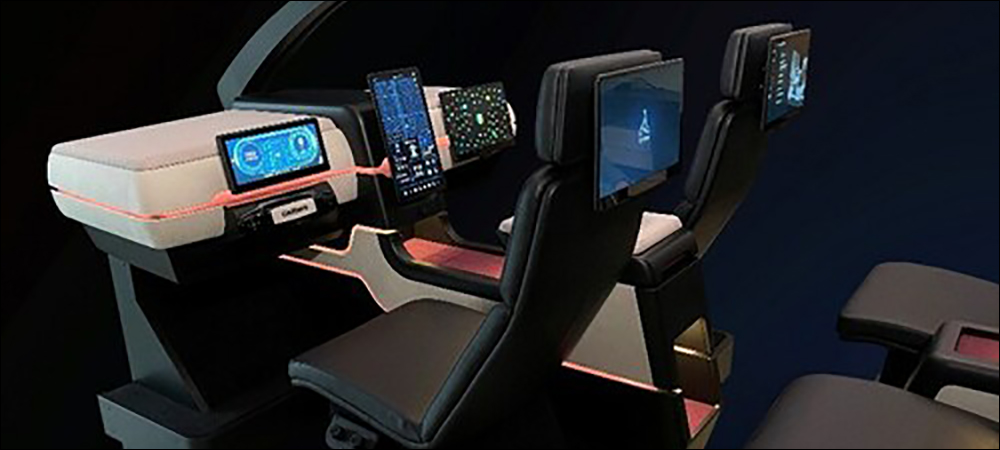- Garmin Intros UWB In-Vehicle Entertainment System
- Fujitsu, Marubun, Ossia Partner on ePaper RFID Tags
- Renesas Offers Dev Kit, Supports Matter Protocol for BLE
- Unikie Expands IoT Product Line with BLE Solutions
- ETAG Tech Selects Atmosic BLE Solutions for ESL Portfolio
Presented here are recent news announcements in the radio frequency identification and Internet of Things industries.
Garmin Intros UWB In-Vehicle Entertainment System
Garmin has announced its Unified Cabin Experience, an in-cabin solution for the automotive original equipment manufacturer (OEM) market, with an emphasis on technologies that unify multiple domains, touchscreens and wireless devices on a single system-on-chip (SoC). Featuring four infotainment touchscreens, an instrument cluster, a cabin-monitoring system, wireless headphones, wireless gaming controllers, smartphones and entertainment options, all powered by a single multi-domain computing module, the solution is intended to address technical and user-experience challenges for multi-screen systems running on the Android Automotive operating system.
The solution “highlights technological innovations that advance the capabilities of Android Automotive OS for delivering a multi-zone personalized experience that consumers are expecting,” said Matt Munn, Garmin’s OEM managing director, in a prepared statement. “There are enormous opportunities to integrate many types of features and technologies into a single, unified system, but our connected in-cabin experience goes beyond system integration with innovative new features and an improved user experience.”
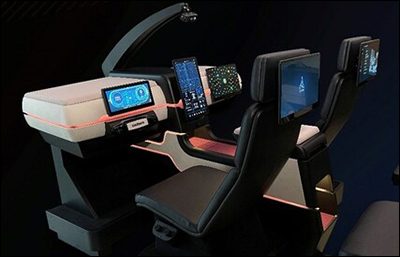 The system is customizable for each passenger, utilizing ultra-wideband (UWB) positioning technology to automatically connect wireless devices to the appropriate display. A cabin-monitoring camera identifies and unlocks each passenger’s personal user interface profile, enabling occupants to enjoy personalized entertainment options, including cloud-based console and PC games, as well as on-board games and multiple streaming video platforms. Passengers can locate connected devices, control other displays, and share video and audio content across multiple passenger zones. Garmin worked with several OEM providers to create the Unified Cabin Experience.
The system is customizable for each passenger, utilizing ultra-wideband (UWB) positioning technology to automatically connect wireless devices to the appropriate display. A cabin-monitoring camera identifies and unlocks each passenger’s personal user interface profile, enabling occupants to enjoy personalized entertainment options, including cloud-based console and PC games, as well as on-board games and multiple streaming video platforms. Passengers can locate connected devices, control other displays, and share video and audio content across multiple passenger zones. Garmin worked with several OEM providers to create the Unified Cabin Experience.
Xperi‘s DTS AutoSense platform uses machine learning and a single camera to enable safety and experience features, such as seat occupancy (including body pose), hands-on-wheel, activity and seatbelt detection, driver attention zones, driver distraction and occupant recognition. Xperi’s DTS AutoStage hybrid radio solution provides an immersive radio listening experience, automatically switching between a station’s over-the-air radio signal to its IP stream when traveling in and out of range, as well as providing station metadata, album art and more.
Mapbox‘s Dash technology enables navigation, search and visualization, including artificial intelligence and traffic data. This integration provides customizable interactive maps across all five displays. Atari integration allows arcade-style gaming without a data connection. And BlackBerry QNX Hypervisor and Neutrino RTOS incorporates security technologies to safeguard users against system malfunctions, malware and cybersecurity breaches. The system supports Arm’s 64-bit v8 computing platforms and Intel’s x86-64 architecture.
Fujitsu, Marubun, Ossia Partner on ePaper RFID Tags
Ossia, which created the Cota Real Wireless Power—a patented technology that delivers power over the air, at a distance and without the need for line-of-sight—has announced a line of e-paper RFID tags resulting from a strategic three-way partnership with Marubun and Fujitsu Semiconductor Memory Solution (FSM). Ossia and Marubun have been working to develop a wirelessly powered Internet of Things (IoT) sensor receiver that can be embedded within a variety of electronic devices.
FSM offers memory products and solutions using ferroelectric random-access memory, including a battery-free solution utilizing RFID technology. “It simply makes good business sense to leverage wireless power for IoT that comes in the many hundreds of thousands, like ESLs and RFID,” said Satoshi Fujino, Marubun’s senior VP, in a prepared statement. “Wires and batteries are so limiting that these two devices have been held back from widespread innovation, not to mention adoption. Cota Real Wireless Power makes ESLs and RFID truly viable and useful, and opens the door to expand on use cases.”
The Cota Real Wireless Power system provides focused energy over the air to hundreds of RFID tags, asset-tracking systems and shelf labels simultaneously and automatically, without user intervention, maintenance, batteries or wiring. It can be used around people and pets, and it can be remotely managed via the cloud. “We are driven to build new possibilities for a more sustainable world by connecting people, technology and ideas,” added Kohji Nozoe, the director of FSM’s Solution Business Department, in the prepared statement.
Doug Stovall, Ossia’s CEO, said, “This strategic partnership enables us to power the future—sustainably, practically, and seamlessly—of digital shelf labels and asset tracking systems like smart barcodes. Marubun and FSM are forward-thinking innovators with whom we are honored to be collaborating, and with this announcement… we encourage more leaders who wish to change the status quo to explore and discuss the ways wireless power can help solve world problems.”
Renesas Offers Dev Kit, Supports Matter Protocol for BLE
Renesas Electronics, a supplier of semiconductor solutions, has announced a development kit that includes support for the new Matter protocol. The company says it will offer Matter support on all future Wi-Fi, Bluetooth Low-Energy (BLE) and IEEE 802.15.4 (Thread) products, including those from Dialog Semiconductor and Celeno Communications, which it recently acquired.
The Matter protocol, intended to enable interoperability for smart-home devices, securely and robustly connects various devices across ecosystems, regardless of manufacturer. The application layer protocol abstracts underlying connectivity technologies, such as Wi-Fi, Thread and BLE. By using a common software stack, device manufacturers that build with Matter will be able to support various smart-home ecosystems and voice services. Smart-home users will be able to buy any Matter-certified device, regardless of their platform of choice.
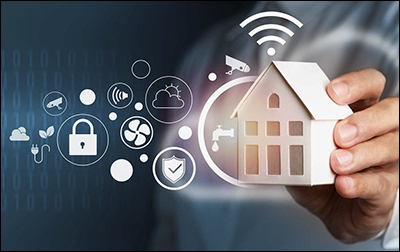 Renesas is a member of the Connectivity Standards Alliance, which creates IoT standards and certification. “We’re delighted to see an IoT leader such as Renesas commit to supporting the Matter standard,” said Chris LaPre, the organization’s head of technology, in a prepared statement. “It’s another indication of the positive momentum the standard is generating across both device and equipment makers.”
Renesas is a member of the Connectivity Standards Alliance, which creates IoT standards and certification. “We’re delighted to see an IoT leader such as Renesas commit to supporting the Matter standard,” said Chris LaPre, the organization’s head of technology, in a prepared statement. “It’s another indication of the positive momentum the standard is generating across both device and equipment makers.”
Renesas has a great deal of experience with BLE and Wi-Fi technologies. With more than 600 million wireless devices shipped to date, the company offers a range of connectivity SoCs used in IoT systems, wearable products and home networking. Its development tools supporting Matter are intended for use by IoT device makers looking to integrate products into the Matter ecosystem.
Sean McGrath, the VP of Renesas’s Connectivity and Audio Business Division, added in the statement, “As the embedded processing leader, connectivity is a critical part of our IoT solutions. With our broad range of Bluetooth and Wi-Fi solutions, and Thread products in development, we’re well positioned to take advantage of the Matter standard in a variety of applications working with customers worldwide.”
Unikie Expands IoT Product Line with BLE Solutions
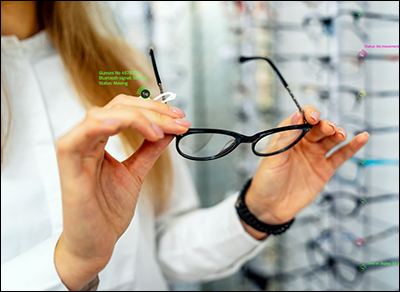 Unikie has introduced technology designed to enable smart spaces. Millions of dollars are lost annually in business environments, retail outlets and warehouses, the company reports. To enable real-time awareness, Unikie’s technology employs Bluetooth Low Energy (BLE), allowing users to create an environment in which Bluetooth tags and connectivity bring intelligence to retail stores, warehouses and manufacturing floors.
Unikie has introduced technology designed to enable smart spaces. Millions of dollars are lost annually in business environments, retail outlets and warehouses, the company reports. To enable real-time awareness, Unikie’s technology employs Bluetooth Low Energy (BLE), allowing users to create an environment in which Bluetooth tags and connectivity bring intelligence to retail stores, warehouses and manufacturing floors.
Last year, Unikie launched a smart-space solution by which large areas could be tracked with machine vision and lidar connected to an intelligent localization engine, creating a non-tag-based real-time understanding of what is happening within a given space, as well as why it is happening and what will happen next. Now, the company is offering its BLE technology for businesses seeking real-time data regarding the movements and locations of goods.
A Bluetooth tag is placed on each object, such as a product in a store, after which it sends a signal to a locator device that forwards the information to Unikie’s Positioning Engine. The Positioning Engine processes the data received from one or more locator devices and can display relevant information in the tracking interface for end users. This can be interconnected to an enterprise resource planning or data-management systems to create real-time visibility. Data regarding location, the movement of products and goods, and more can then be used to create AI-generated business insights, such as the most interesting or used sales items, product availability, or the best sales item locations.
ETAG Tech Selects Atmosic BLE Solutions for ESL Portfolio
Atmosic Technologies, a provider of energy-harvesting wireless platforms for the Internet of Things (IoT), and ETAG Tech, a supplier of electronic shelf labels (ESLs), have partnered to bring Atmosic’s ultra-low-power wireless solutions to ETAG Tech’s ESL portfolio. ETAG Tech is using Atmosic’s ATM2 SoCs for several ESL designs, and the company plans to incorporate the SoCs in future designs to harness the energy-harvesting technology.
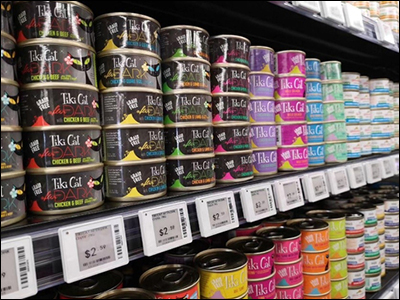 “By helping to solve the battery problems associated with electronic displays, we anticipate that ESLs will see much wider adoption across the retail industry and other sectors,” said David Su, Atmosic’s CEO, in a prepared statement. “Not only does Atmosic’s technology cut down on the cost of replacing batteries, but it also reduces the maintenance time needed for fleets of ESL display deployments.”
“By helping to solve the battery problems associated with electronic displays, we anticipate that ESLs will see much wider adoption across the retail industry and other sectors,” said David Su, Atmosic’s CEO, in a prepared statement. “Not only does Atmosic’s technology cut down on the cost of replacing batteries, but it also reduces the maintenance time needed for fleets of ESL display deployments.”
The ATM2 series is Bluetooth 5 standard-compliant and integrates Atmosic’s Lowest Power Radio technology to reduce power consumption for ESLs and other connected devices, enabling them to last for years on a single battery. ETAG Tech intends to deploy the ATM3 series in its next ESL designs to leverage Atmosic’s Controlled Energy Harvesting technology, which can collect energy from ambient light. The SoC can harness energy from other sources as well, including radio, mechanical or kinetic motion, and thermal sources.
Electronic shelf labels are most frequently used in retail environments, but there are other industries for which they can be useful, including healthcare, manufacturing and travel. According to the company, ESLs allow companies to update information in real time, and to better manage inventory without having to frequently replace paper signage and stickers. They are suitable for environments in which hundreds or thousands of items might be on display within a store or other environment.

